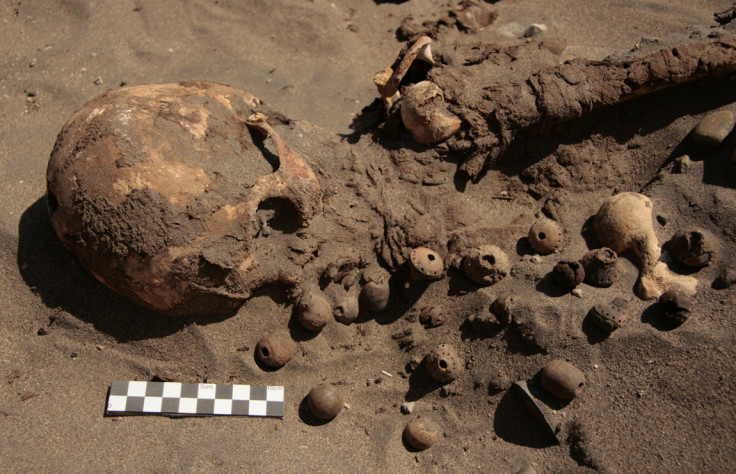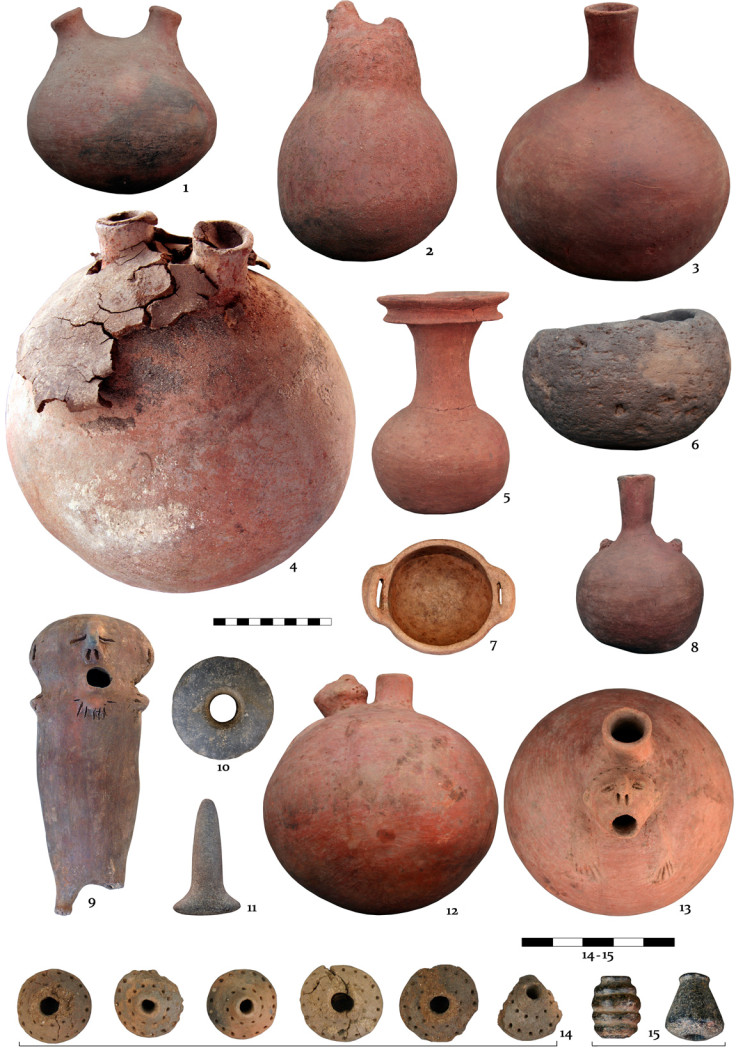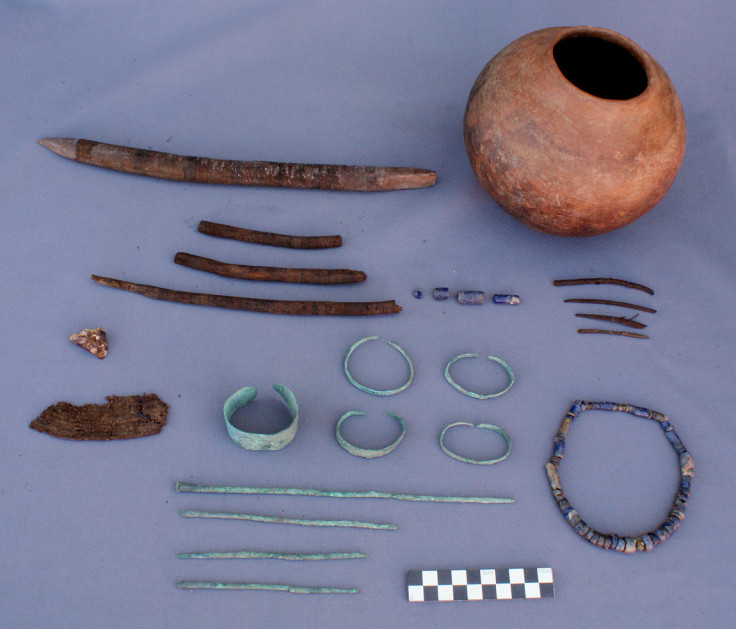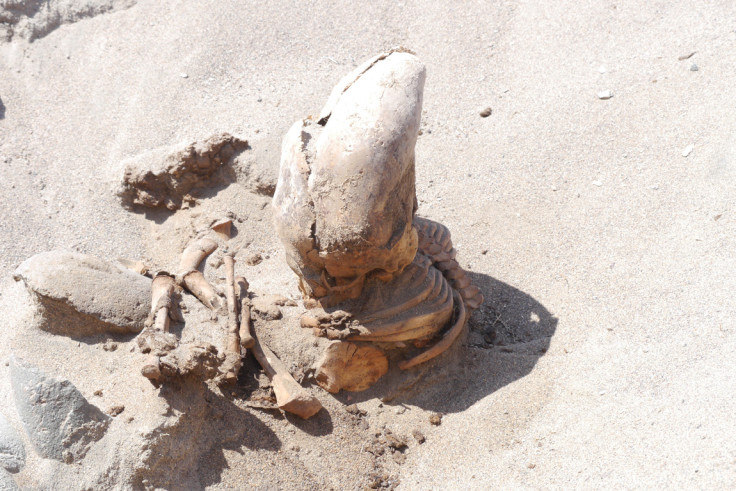Peru: 150 Mummies of Ancient Unknown Civilisation Discovered in Atacama Desert [PHOTOS]
A team of archaeologists from universities in Poland, Peru and Colombia have discovered 150 mummies in the Atacama Desert belonging to an unknown culture that predate the Tiwanaku and Inca civilization by almost 500 years.
The bodies were mummified naturally by being buried directly in the sand with no stone structures, wrapped in cotton veils, reed mats or fishing nets, and radiocarbon dating shows that the oldest mummies came from 4<sup>th century AD, while the youngest mummies came from 7<sup>th century AD.


The Tiwanaku civilisation is believed to have existed between 500AD and 1,000 AD, covering much of what is Peru and Chile today.
Under Project Tambo, the team have been excavating in the Tambo River delta in the northern region of the Atacama Desert since 2008 and the first mummies were found in 2012, but it took until March 2014 for the team to make major discoveries.


Together with the bodies in individual graves, the archaeologists found numerous grave goods, such as weapons like bows and quivers with arrows tipped with obsidian heads, and maces with stone or copper finials.
There were also richly decorated weaving tools, jewellery made from tumbaga (a gold and copper alloy) and copper, reed withes attached to the ears of the dead and beautiful intact pottery.

According to Professor Józef Szykulski, leader of the research project from University of Wrocław, the mummies are of virtually unknown people, and the bows are a particularly interesting find that possibly symbolised power, which could mean that people buried in the Tambo River delta were nobility or the society's elite.

"Bows are extremely rare among the finds from the area of Peru. We have seen them however, in areas further south like Chile and further east in Amazonia. The issue, however, requires a deeper study," Szykulski tells IBTimes UK.
In one grave, the archaeologists even found the remains of a llama, which would mean that the animal had been brought to the region much earlier than previously thought.
"Llama burials are quite common in the pre-Columbian cultures," says Szykulski.
"We learned a lot about what equipment had been used, such as baskets and fishing nets, what these people were doing, which was agriculture and fishing, how they dressed, what ornaments they wore and even how they combed their hair."

The Polish archaeologists will be returning to Peru in October for further excavations, both in the cemetery where they found the unknown mummies, and in an adjacent cemetery where burials belonging to individuals from the Tiwanaku civilisation were found.
The Tiwanaku people were not believed to have ventured as far as the Tambo River delta, and the discovery of these tombs will help to increase understanding of pre-Columbian civilisations in Peru.

Project Tambo is a joint effort between University of Wrocław, University of Szczecin, University of Poznań, University of Silesia, the Archaeological Museum in Głogów, Universidad Católica de Santa Maria in Arequipa, Universidad Nacional in Ica, the Universidad Central in Bogota (Colombia), Jagiellonian University and the University of Łódź.
© Copyright IBTimes 2024. All rights reserved.







